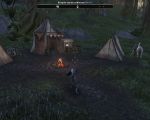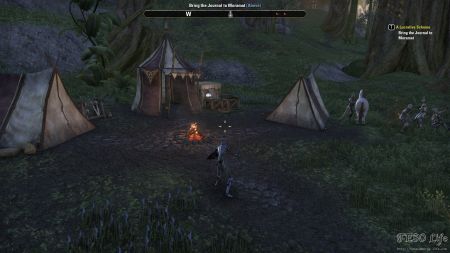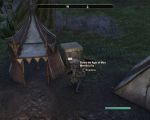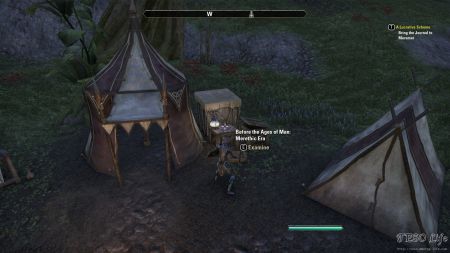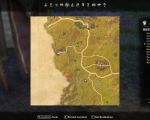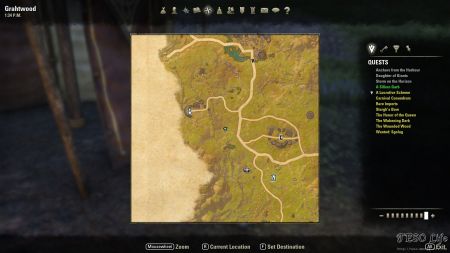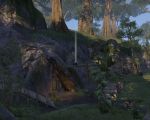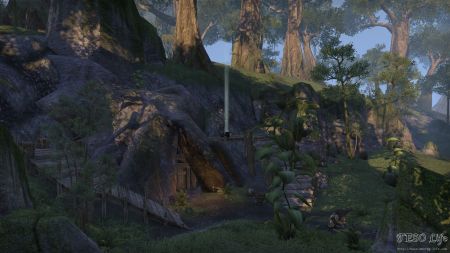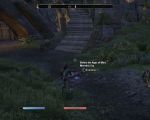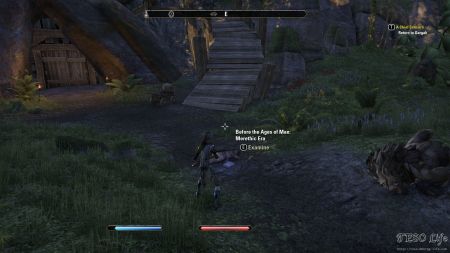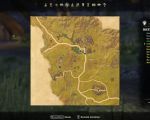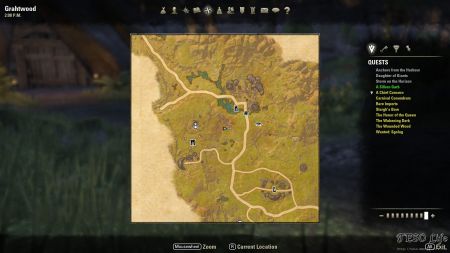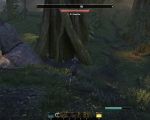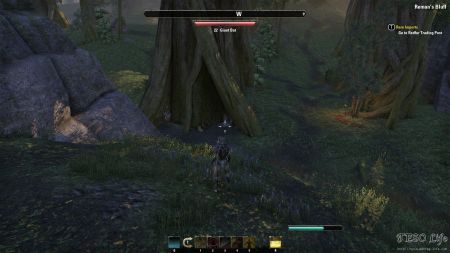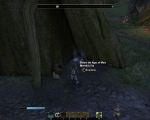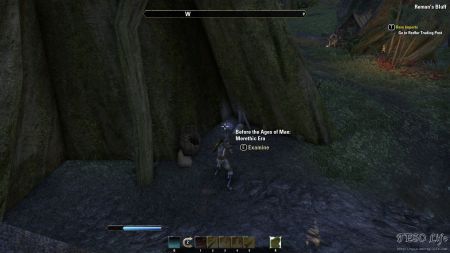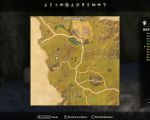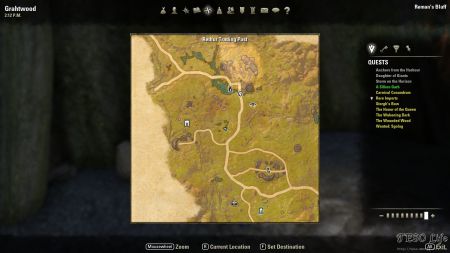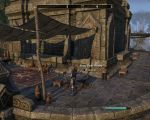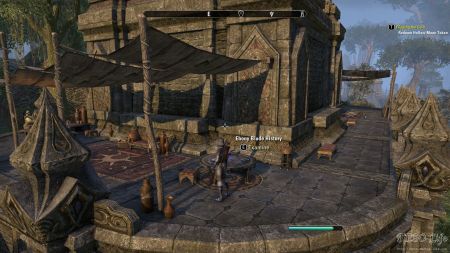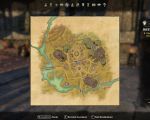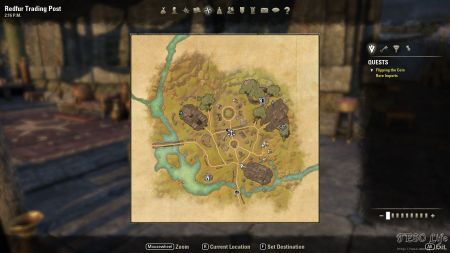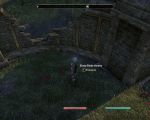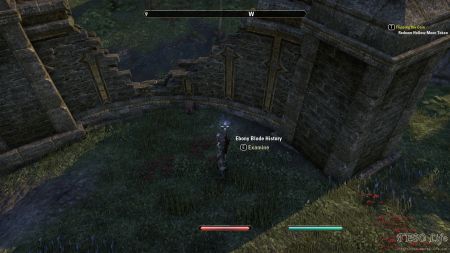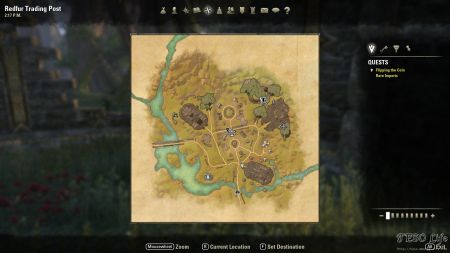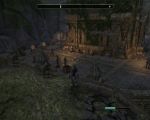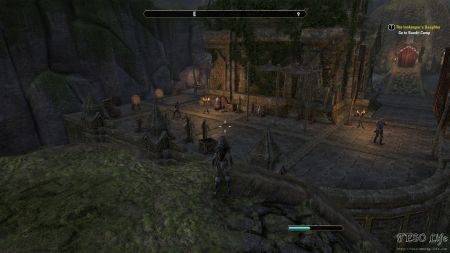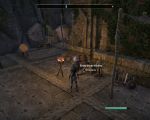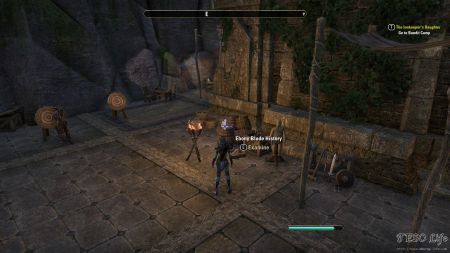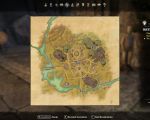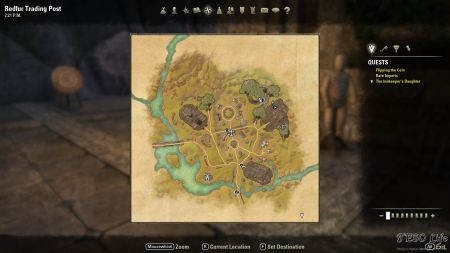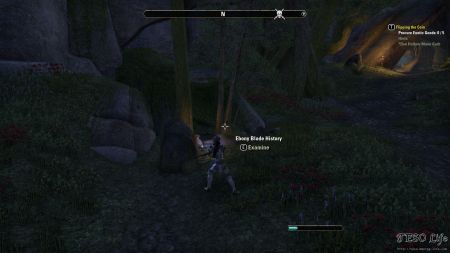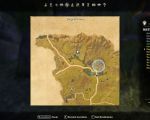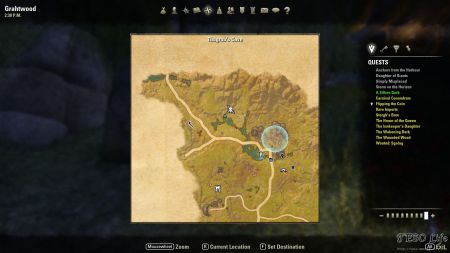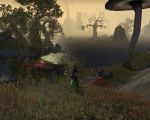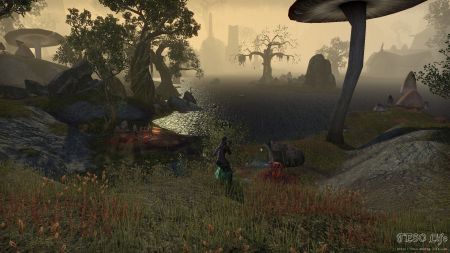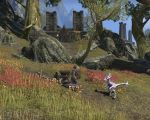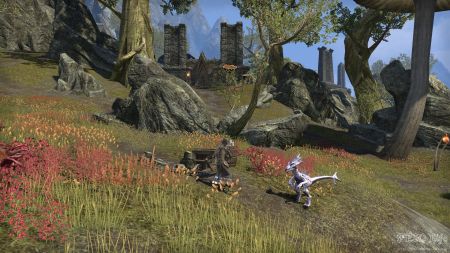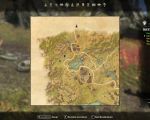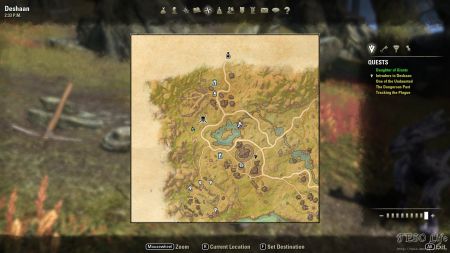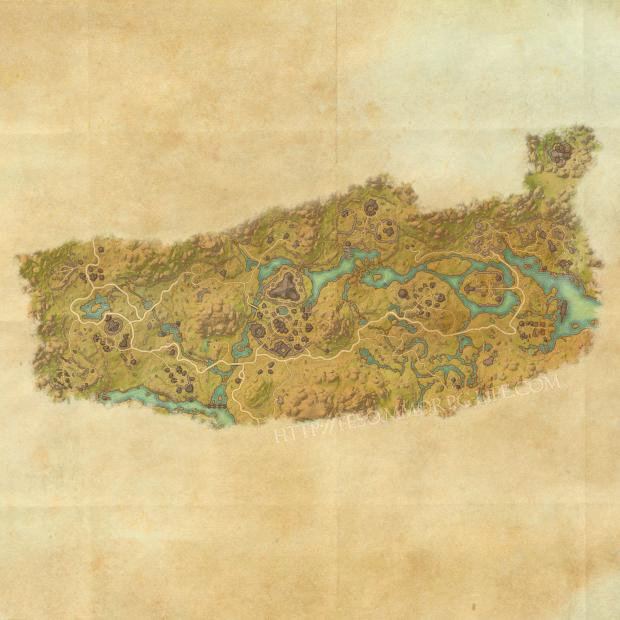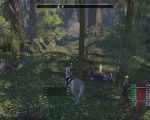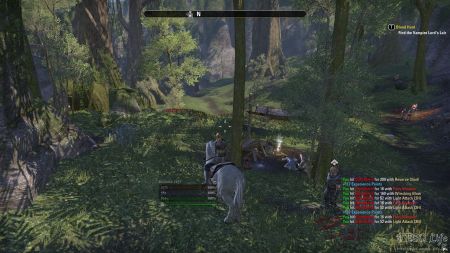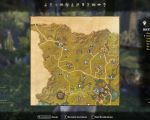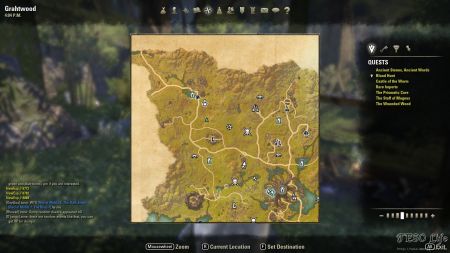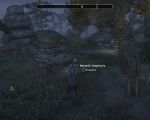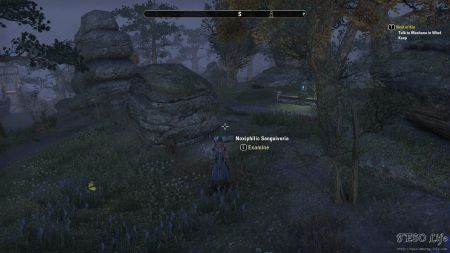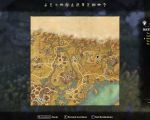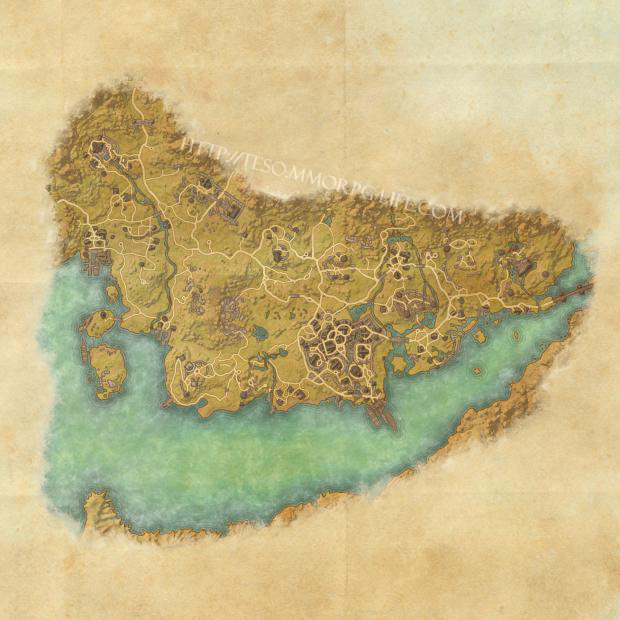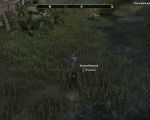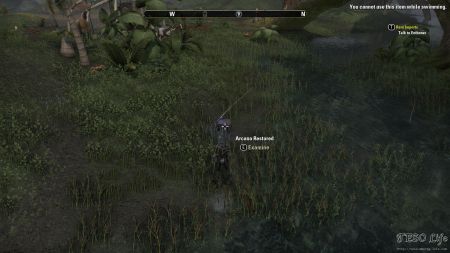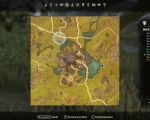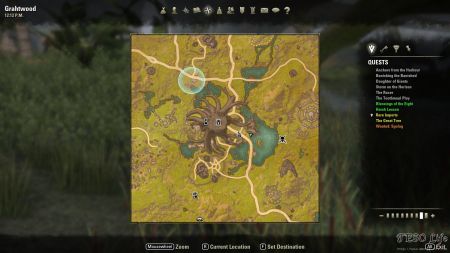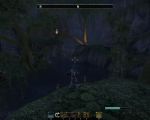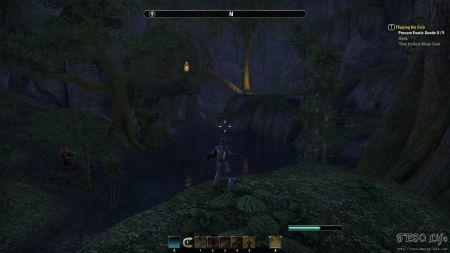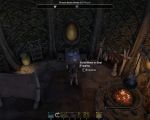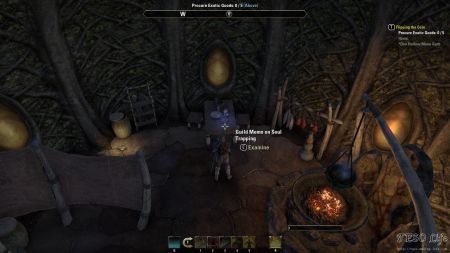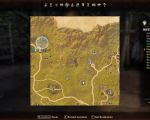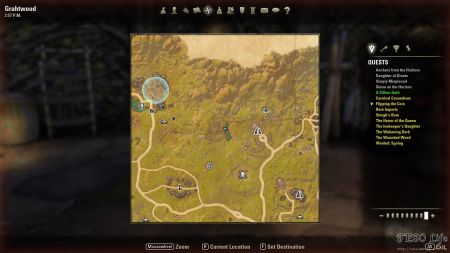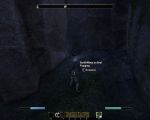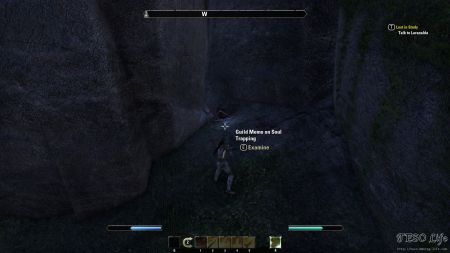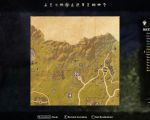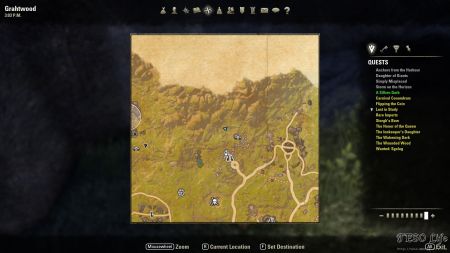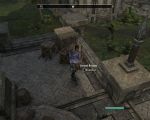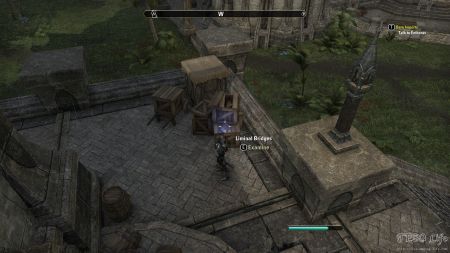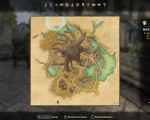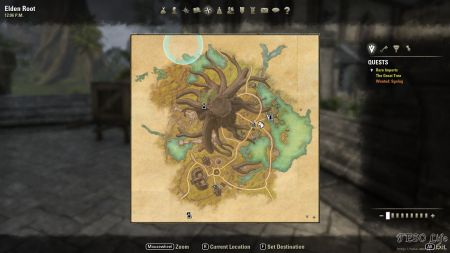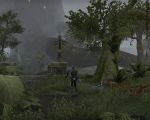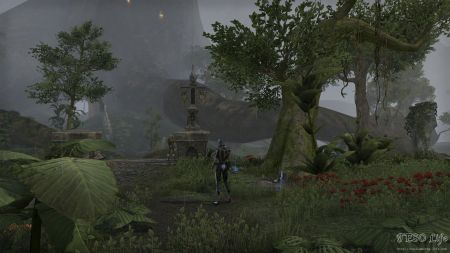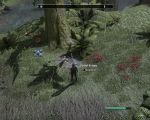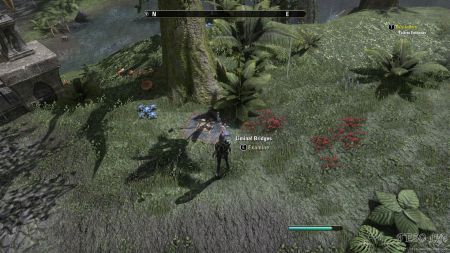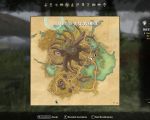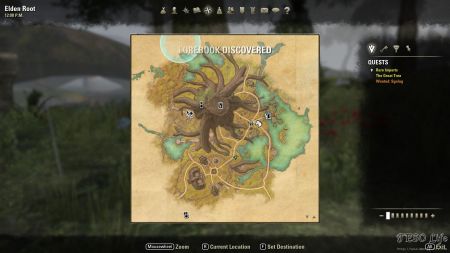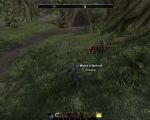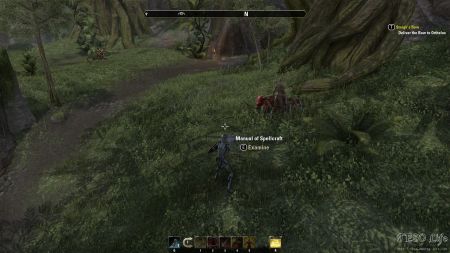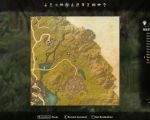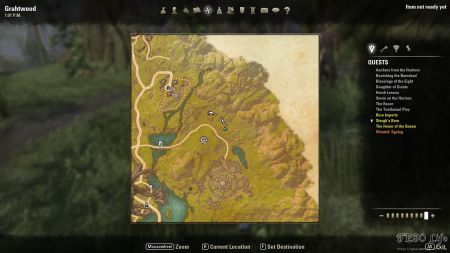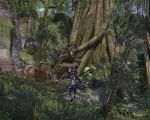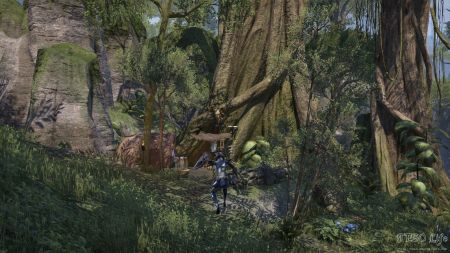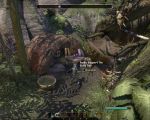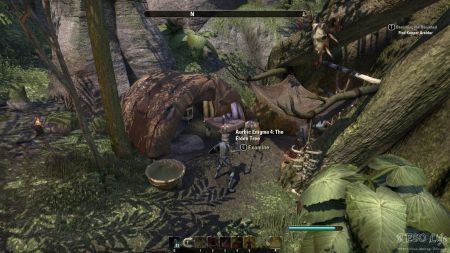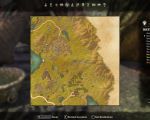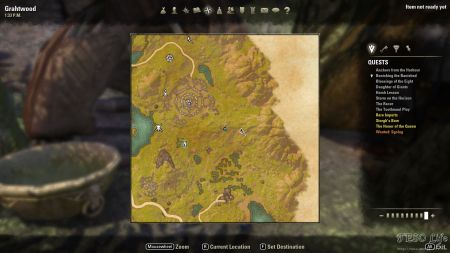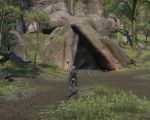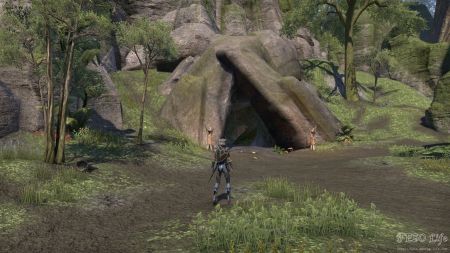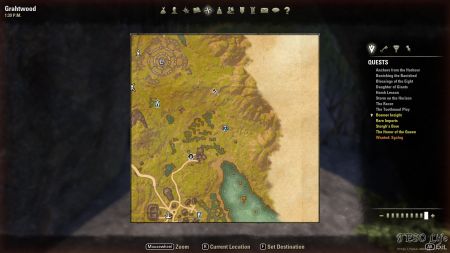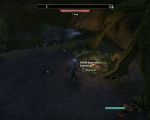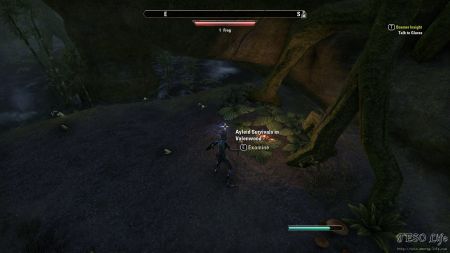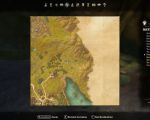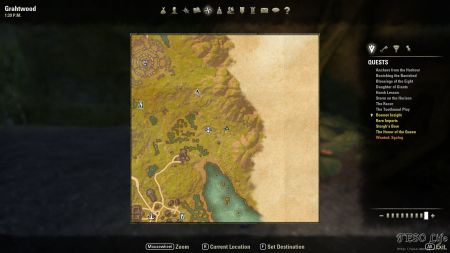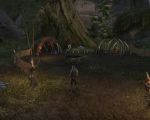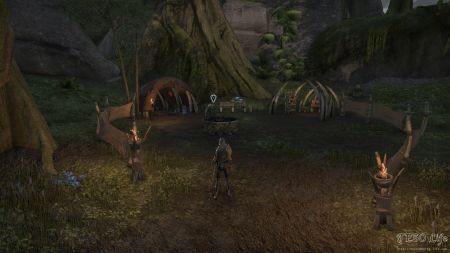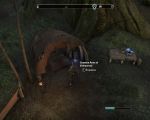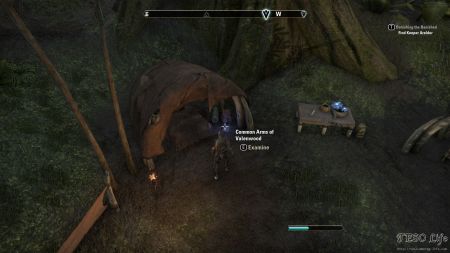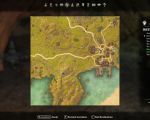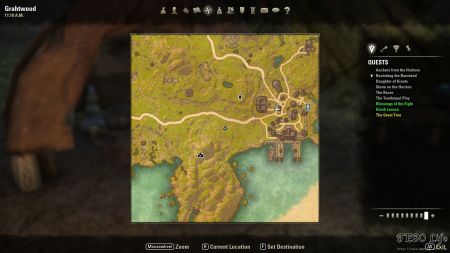| Collection: | Myths of the Mundus |
| Location(s): | Grahtwood |
| Location Notes: | This lorebook is found in northwestern Grahtwood, in vicinity of Reman’s Bluff POI (fortress icon). |
| Image walkthrough: | |
| Map: | 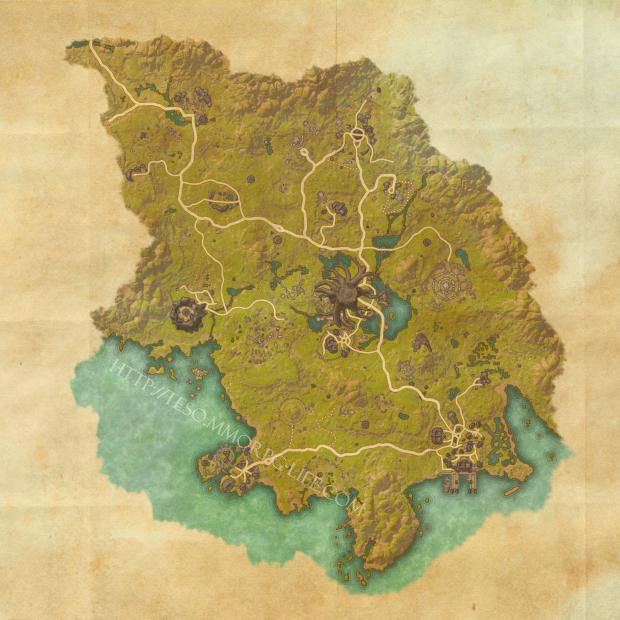 |
Lorebook text
by Aicantar of Shimmerene
The Merethic Era was figured by early Nord scholars as a series of years numbered in reverse order backward from their "beginning of time": the founding of the Camoran Dynasty, recorded as Year Zero of the First Era. The prehistoric events of the Merethic Era are listed here with their traditional Nord Merethic dates. The earliest Merethic date cited by King Harald’s scholars was ME 2500, the Nord reckoning of the first year of time. As such, the Merethic Era extends from ME 2500 in the distant past to ME 1, the year before the founding of the Camoran Dysnasty and the establishment of the White-Gold Tower as an independent city-state.
According to King Harald’s bards, ME 2500 was the date of construction of the Adamantine Tower on Balfiera Island in High Rock, the oldest known structure of Tamriel. (This corresponds roughly to the earliest historical dates given in various unpublished Elven chronicles.)
During the early Merethic Era, the aboriginal beast-peoples of Tamriel (the ancestors of the Khajiit, Argonians, Orcs, and other beastfolk) lived in preliterate communities throughout Tamriel.
In the Middle Merethic Era, the Aldmeri refugees (mortals of Elven origin) left their doomed, now-lost continent of Aldmeris (also known as "Old Ehlnofey") and settled in southwestern Tamriel. The first colonies were distributed at wide intervals on islands along the entire coast of Tamriel. Later inland settlements were founded primarily in fertile lowlands in southwest and central Tamriel. Wherever the beastfolk encountered the Elves, the sophisticated, literate, technologically advanced Aldmeri cultures displaced the primitive beastfolk into the jungles, marshes, mountains, and wastelands. The Adamantine Tower was rediscovered and captured by the Direnni, a prominent and powerful Aldmeri clan. They built Crystal Tower on Summerset Isle and, later, the White-Gold Tower in Cyrodiil.
During the Middle Merethic Era, Aldmeri explorers mapped the coasts of Vvardenfell, building the First Era High Elven wizard towers at Ald Redaynia, Bal Fell, Tel Aruhn, and Tel Mora in Morrowind. It was also during this period that Ayleid (Wild Elven) settlements flourished in the heartland surrounding White-Gold Tower (in present-day Cyrodiil). Wild Elves, also known as the Heartland High Elves, preserved the Dawn Era magics and language of the Ehlnofey. Ostensibly a tributary to the High King of Alinor, the Heartland’s long lines of communication from the Summerset Isles’ sovereignty effectively isolated Cyrodiil from the High Kings at Crystal Tower.
The Late Middle Merethic Era is the period of the High Velothi Culture. The Chimer, ancestors of the modern Dunmer, or Dark Elves, were dynamic, ambitious, long-lived Elven clans devoted to fundamentalist ancestor worship. The Chimer clans followed the Prophet Veloth out of the ancestral Elven homelands in the southwest to settle in the lands now known as Morrowind. Despising the secular culture and profane practices of the Dwemer, the Chimer also coveted the lands and resources of the Dwemer, and for centuries provoked them with minor raids and territorial disputes. The Dwemer (Dwarves), free-thinking, reclusive Elven clans devoted to the secrets of science, engineering, and alchemy, established underground cities and communities in the mountain range (later the Velothi Mountains) separating modern Skyrim and Morrowind.
The Late Merethic Era marks the precipitous decline of Velothi culture. Some Velothi settled in villages near declining and abandoned ancient Velothi towers. During this period, Velothi high culture disappeared on Vvardenfell Island. The earliest Dwemer Freehold colonies date from this period. Degenerate Velothi devolved into tribal cultures which, in time, either evolved into the modern Great Houses of Morrowind or persisted as the barbarian Ashlander tribes. The only surviving traces of this tribal culture are scattered Velothi towers and Ashlander nomads on Vvardenfell Island. The original First Era High Elven wizard towers along the coasts of Tamriel were also abandoned around this time.
In the Late Merethic Era, pre-literate humans, the so-called "Nedic Peoples," migrated from the continent of Atmora (also "Altmora" or "the Elder Wood" in Aldmeris) and settled in northern Tamriel. The Nord culture hero Ysgramor, leader of a great colonizing fleet to Tamriel, is credited with developing a runic transcription of Nord speech based on Elvish principles, and so Ysgramor is considered the first human historian. Ysgramor’s fleet landed at Hsaarik Head at the extreme northern tip of Skyrim’s Broken Cape. The Nords built the legendary city of Saarthal there. The Elves drove the Men away during the Night of Tears, but Ysgramor soon returned with his Five Hundred Companions.
Also during the Late Merethic Era, a legendary immortal hero, warrior, sorcerer, and king (variously known as Pelinal Whitestrake, Harrald Hairy Breeks, Ysmir, and Hans the Fox) wandered Tamriel. He gathered armies, conquered lands, ruled them, and then abandoned his kingdoms so he could wander again.

